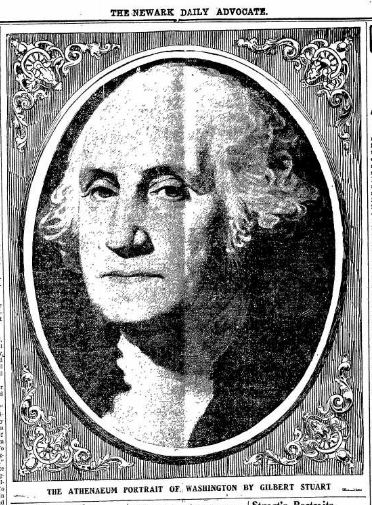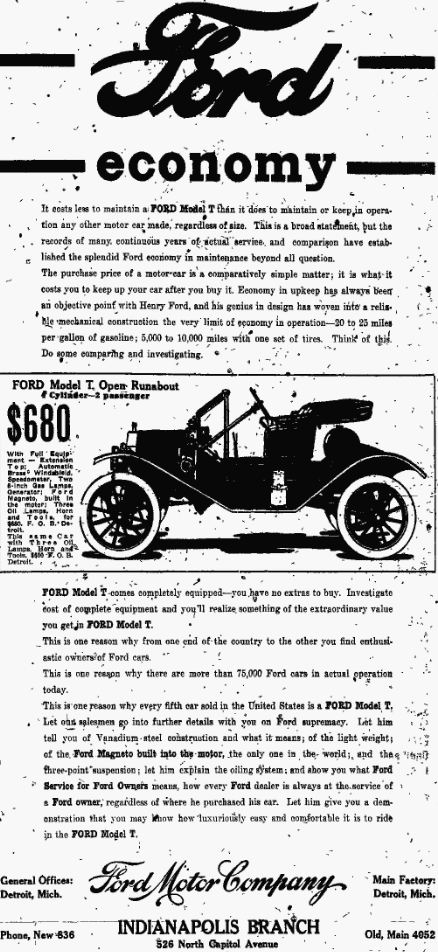
Image from ARTMAGICK
Poem in College Magazine.
The following poem which appeared in the University of Virginia Magazine, published by the students, was written by L. Travis White, of Frederick, who is studying law at the institution:
Gareth to Lynette.
Then Gareth: “Here be rules. I know but one —
To dash against mine enemy and to win.” — Tennyson.
More soft than silken strands the hair
That tumbles round thy temples fair,
Tossed by the summer air;
Like roses bloom thy cheeks;
The droning bee they near deceive,
When proffered sweetness to receive
Some brim-full flower he seeks.
Thine eyes, like twin stars on the deep,
Soft-mirrored when the billows sleeps
And moaning winds their silence keep,
Shine tenderly; yet seem
They like the dewdrops when the lawn
Gem-strewn, doth greet the Sun of dawn —
And mockingly they gleam.
Near thee the lark on tireless wing
Hovers his sweetest song to sing;
To thee the zephyrs tribute bring,
With violent-laden breath.
The buds whose fragrance is most sweet
Are gladly crushed beneath thy feet —
Thrice blest in such a death.
But thy heart is as hard to lover’s pain
Like the rocks beside the storm-swept main —
Against them dash, in vain, in vain,
The waves of a passionate sea;
Yet slow to ocean yields the land,
The proud rocks crumble into sand —
So will I conquer thee!
— L. Travis White.
The News (Frederick, Maryland) Dec 4, 1912

L. Travis White is number 4 in the picture above.
Frederick High School’s Class of 1911 is once again part of the scene at the local school, at least in the form of the official class photograph presented to the school recently by Robert J. DiDomenico, executive director of Goodwill Industries of Monocacy Valley Inc.
The full story of where the old fashioned studio picture spent the last 60 years will probably never be known, although it can easily be visualized gracing the living room of some proud graduate’s home.
Whatever its history, the picture complete with handsome frame and glass, turned up as part of an anonymous donation to Goodwill and was spotted by Mrs. Barbara Coulter, secretary to DiDomenico, who recognized it as an interesting bit of memorabilia for the school.
DiDomenico agreed that this was a fitting disposition for the photograph and it was presented to George Seaton, principal of Frederick High School.
The picture, taken in the era of the old Boys High School, now Elm Street Elementary School, reveals several points of contrast with more recent high school class photos. Most obvious, of course, is the fact that the class is composed of only 19 members, all boys.
It is also interesting to note that the students are pictured in a West Point type military uniform, an indication of the schools’ past presently reflected only in the nickname “Cadets,” used by Frederick High athletic teams.
The students’ haircuts, on the other hand, are a bit on the full side with moderate sideburns not too different from today’s more conservative styles.
Most familiar, however, are the surnames, most of which are still prominently represented in Frederick County today. No effort has been made to tell how many members of the class survived, but Principal Seaton would be pleased to hear from any who might still live in the area.
Names of those identified in the Smith Studio (of Frederick) photograph include: Clyde E. Burgee, Allen G. Quynn, Earl E. Zeigler, L. Ray Burgee, Louis A. Rice, James R. Keller, J. Ernest Haifleigh, R. Dorsey Sappington, Willis D. Witter, George L. Rothenhoefer, Dean W. Hendrickson, David L. Johnson, William H. Solt, Marvin L. Shirley, Prof. Amon Burgee, Edgar J. Eyler, J. Roger Fisher, L. Travis White, John L. Shaw and J.F. Minor Simpson.
The Frederick Post (Frederick, Maryland) Dec 15, 1971

The News (Frederick, Maryland) Jun 6, 1912

The News (Frederick, Maryland) Jun 20, 1914

The Frederick Post (Frederick, Maryland) Apr 11, 1931

Image from Gamblers Book Club
From Bridge Guys – Bridge Books:
White, Littleton Travis – (July 3, 1894 – December 1973) – Littleton Travis White
Odd Tricks, c1934, Edited by Albert H. Morehead and Clifford A. Bender, Publisher: The Bridge World, Inc., New York City, United States; also Odd Tricks, 1978, Edited by Albert H. Morehead and Clifford A. Bender, Publisher: GBC Press, Las Vegas, United States, ISBN-10: 0896508102; also Odd Tricks, 1983, Edited by Albert H. Morehead and Clifford A. Bender, Publisher: Casino Press, ISBN-10: 0870190334 / ISBN-13: 9780870190339, LC: 34041970
Note: Mr. Paul Ryan has contributed this information in addition to a scanned version of the newspaper article in the El Paso Herald Post upon the publication of the bridge book. This information is included in a .pdf file for the interest of the bridge visitor and, in addition, a visually more acceptable version, also in a .pdf file format. Mr. Paul Ryan has also included the scanned version of the World War I Draft Registration Cards, 1917-1918, of Littleton Travis White and also the scanned information collected during the 1930 United States Federal Census. Also include is the Social Security
* * * * *
LETTERS TO THE EDITOR
The Work Done By The Just Government League:
[excerpt – L. Travis White’s mother was involved in women’s suffrage movement]

The News (Frederick, Maryland) Dec 15, 1915

The News (Frederick, Maryland) Dec 17, 1901
* * *
Evidently, his sister was a bit of an artist:

The Frederick Post (Frederick, Maryland) Oct 15, 1917

Image from HCAP
L. Travis White’s sister, Roxanna, married the president of St. John’s College. What I found interesting were his comments to the Rotary Club about the educational revolution, and St. John’s “counter-revolution”:
COLLEGE HEAD TALKS TO CLUB
St. John’s System Explained To Rotarians By President
Educational counter-revolution by St. John’s College, Annapolis, shared discussion with the shortage of Maryland oysters as topics of discussion before the Wednesday luncheon meeting of the Frederick Rotary Club.
Dr. John Spangler Kieffer, president of St. John’s College and also of Annapolis’ Rotary, described the 100-book foundation of knowledge system inaugurated by the school in 1937.
W.R. Slemmer, chairman of the local Rotarians’ committee for an oyster-roast to be held later this month, changed the after-dinner talk of members from the day’s topic of “Education in Revolution”, to “will we be able to get oysters to roast?”, when he refused to continue sale of tickets for the proposed affair, until weather conditions and the bivalve market assures delivery of the food.
Introduced by his uncle, Rev. Henri L.G. Kieffer, the speaker of the meeting explained St. John’s College new system as anomalous, in that it is designed to maintain the “aura of college aristocracy, with democratic ideals.”
The highly honored Harvard graduate was made president of the Annapolis college last year, succeeding Stringfellow Barr in continuing the “nationally observed new-trend for education, started in 1937.” President Kieffer’s wife, the former Miss Roxanna White, is a native of Frederick.
Called Revolutionary
Dr. Kieffer explained that the St. John’s program is actually a revolution against the nineteenth-century revolution in education. That classical education of the past hundred years was not the complete fundamental knowledge necessary to developments of laboratory sciences and that elective courses were a compromise which undergraduates are not capable of choosing.
He deplored over-specialization in teaching undergraduates and summed up the program of his college system, as one intended to complete adolescence of students by training the mind to think generally and adultly; thereby being acquainted with the “principles” of the civilization in which he will live.
“We are living through a revolutionary period, as evidenced by the present loss of standards, faith and belief in things,” Dr. Kieffer said, “There is skepticism, dogmatism, on every hand. There is a general lack of knowledge and faith in fundamentals. We have lost the stability of the nineteenth century minds, because the atomic bomb disproved Maxwell’s system of physics,” the speaker concluded.
The Frederick Post (Frederick, Maryland) Feb 12, 1948
* * * * *
Interesting “men vs. women” note in this article excerpt:
PARTY FOLLOWS FINAL SEMINAR
Mr. And Mrs. Kieffer Are Honored By Group At Library
Women may control the wealth of the country as statistics indicate, but it was the men who defended its economic system as opposed to the Communist theory in a lively final session of the Great Books Seminar in the C. Burr Arts Library, May 2 during the discussion of the Communist Manifesto. John S. Kieffer, director of adult education at St. John’s College, Annapolis, who has been conducting the Seminar, presented. The session concluded with a party given by Between-the Book-Ends Club in honor of Mr and Mrs. Kieffer….

The Frederick Post (Frederick, Maryland) May 12, 1952
* * Census Records * *
John Kearnes White, the father, doesn’t every appear to be with the family:

1900 Federal Census – Frederick, MD

1910 Federal Census – Frederick, MD
In 1920, Mrs. White and Roxanna are still living in Frederick, MD, sans father, and Littleton Travis White is a roomer in Virginia, practicing law.
* * *
By 1940, Littleton Travis White was finally married, and to quite the YOUNG lady:

Living in El Paso, Texas, with his mother-in-law, young wife, and baby daughter.
* * * * *
According to his mother’s obituary, she was a member of the United Daughters of the Confederacy:

The Frederick Post (Frederick, Maryland) Apr 30, 1954

Travis’s father appears to have authored a book of poetry. The interesting part is the dedication:

To My Mother, not My Wife.
HATHI TRUST Digital Library has the book online: THE WHITE ROSE
* * * * *
Littleton Travis White died in Annapolis, Maryland, while visiting his sister:

His death was front page news in the El Paso Herald-Post (El Paso, Texas) Dec 8, 1973
The End
All this for a poem!



























































